This is a Kodak Brownie Super 27 camera, made by Eastman Kodak in Rochester, NY between the years 1961 and 1965. This curiously shaped camera was part of Kodak’s long running Brownie series, and includes a built-in flash using AG-1 flashes, a two speed shutter, and a two position focus setting for it’s glass Kodar lens. This combination of features makes the Brownie Super 27 simple to use, but very flexible, allowing for good photographs to be taken in a wide range of situations. Orginally selling for $19 and with a good feature set, the camera was popular, staying in production for nearly four years.
Film Type: 127 Roll Film (twelve 4cm x 4cm exposures per roll)
Lens: Unknown focal length f/8 Kodar Lens Luminized coating 2-elements
Focus: Close-Ups (3.5 feet to 6 feet), Beyond (6 feet to Infinity)
Viewfinder: Plastic Scale Focus Optical
Shutter: Metal Blade
Speeds: 1/40 (with flash door open) and 1/80
Exposure Meter: None
Battery: 2x 1.5v AA Alkaline Batteries (for Flash only)
Flash Mount: In-body AG-1 Flash Reflector
Weight: 290 grams
Manual: https://www.cameramanuals.org/kodak_pdf/brownie_super_27.pdf
How these ratings work |
The Brownie Super 27 is a relic from a short lived era where 127 Super Slides were all the rage. Shaped to look like a projector and featuring the word “Super” in the camera’s name, the camera produced 4cm x 4cm exposures on 127 film. With two shutter speeds and a good glass lens, the camera was capable of pretty good images, in a form factor that’s fun to use and looks like no other! | ||||||
| Images | Handling | Features | Viewfinder | Feel & Beauty | History | Age | |
| 1 | 1 | 1 | 1 | 2 | 1 | 20% | |
| Bonus | none | ||||||
| Final Score | 8.4 | ||||||
History
In today’s age of smart phones and social media, nearly 100% of photographic images are shared online. From the instant our fingers tap the touch sensitive screens of our digital cameras and the electronic sensor captures the 1s and 0s turning light into JPGs and sending them wirelessly to the cloud, friends and family members near and far can share in our most special moments.
It didn’t used to be this way. In the past, sharing memories from birthday parties, weddings, and vacations was done with physical media. I grew up in the 1980s and I remember my family having a book shelf filled with photo albums filled with pages of photographic prints stuck to rigid pages covered in some type of semi-sticky layer and covered with a clear sheet to hold the images in place.
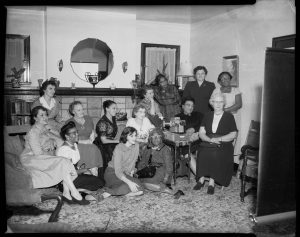
In my parents era, sharing photographic memories was a more formal and shared experience involving a large screen and slide projector. Memories of “dad” pulling out the screen and projector, loading it up with carousels filled with that family’s greatest hits, and everyone oohing and aahing over the large colorful transparencies projected for the whole room to see.
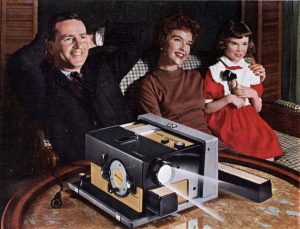
Having not lived through the 1950s, 60s, or most of the 70s, I have no memories of these events, but am constantly reminded of them in movies and television shows depicting the past. In addition, I often visit estate sales in my quest for more cameras and finding slide projectors and stockpiles of empty carousels is extremely common.
Slide projectors work by using transparency, or slide film, such as Kodachrome or Ektachrome, in which the film is developed to a positive (instead of negative) image, and after developing is cut out and mounted into a 2 inch by 2 inch cardboard frame. Each individual piece of slide film is then stored in a box or a sleeve, ready to be inserted into a slide projector, in which a bright light bulb shines through the transparent film and a lens focuses the image onto a large screen.
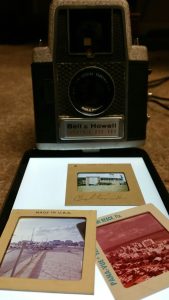
By far, the most common format of slide film was 35mm. Each 24mm x 36mm positive image held enough detail to be projected across a room on up to a 4 foot screen. By the late 1950s, it seems everyone had a slide projector, and in an effort to come up with the next best thing, someone had the brilliant idea that “bigger is better” and discovered that 127 format roll film which had been languishing around since the early part of the 20th century, could make larger 40mm x 40mm transparencies that could fit into a 2 inch by 2 inch slide mount, but with much more detail that not only would look sharper, but could also stand up to be projected farther away on even larger screens.
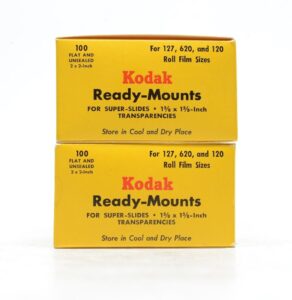
What would someone call these larger “supersized slides”? Super Slides of course!
Now, to be fair, larger than 35mm slides had been done before. Frank Rizzatti of New York based distributor Burleigh Brooks is credited with the first idea of super slides for Rolleiflex cameras that used larger 120 roll film. Since 120 film is 61mm wide, there was no way to mount it into slide mounts that would work in a projector designed for 35mm film, so you’d either have to cut down the 120 image to fit, or use a projector designed for physically larger slides.
The greatest benefit of 127 Super Slides is that they would work in most projectors made for 35mm. Kodak took notice of the interest in the larger Super Slides and pointed out that their projectors could cover the larger area of the larger slides without needing a new projector or additional accessories.
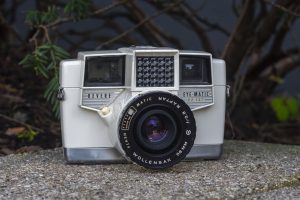 With new interest in 127 film that could make larger Super Slides, a resurgence in 127 film and 127 film cameras hit the market offering many new options. On the upper end, in 1957 Franke & Heidecke released a smaller version of the Rolleiflex officially called the Automatic Rolleiflex 4×4 but better known as the “Baby Rollei” The next year, a flood of hew Japanese 4×4 TLRs hit the market like the Yashica 44, Tokyo Kogaku Primo Jr, Sawyers Mark IV, and Ricohmatic 44.
With new interest in 127 film that could make larger Super Slides, a resurgence in 127 film and 127 film cameras hit the market offering many new options. On the upper end, in 1957 Franke & Heidecke released a smaller version of the Rolleiflex officially called the Automatic Rolleiflex 4×4 but better known as the “Baby Rollei” The next year, a flood of hew Japanese 4×4 TLRs hit the market like the Yashica 44, Tokyo Kogaku Primo Jr, Sawyers Mark IV, and Ricohmatic 44.
American made options like the Bell & Howell Electric Eye 127 and Revere Eye-Matic EE 127 were produced around this time, competing for the buying dollars of the public. But it was Kodak who made a large number of inexpensive 4×4 cameras that probably had the biggest effect.
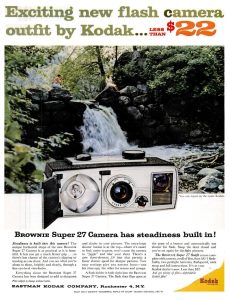
From 1957 to 1962, an entire series of Kodak Brownie Star cameras was produced, many of which used 127 film. One of the most popular models was the Kodak Brownie Starmatic, a simple mostly plastic camera that had the benefit of auto exposure and a glass triplet lens in a compact and mostly plastic body. Cameras in the Kodak Star series were aimed at the beginning photographer who didn’t know a lot about photography, but wanted the larger size of 127. Certainly these cameras could also shoot negative film, but my bet is these were heavily promoted as being compatible with Super Slides.
In August 1961, Kodak would take it another step further and release a model called the Brownie Super 27 was released. That this model was shaped like a slide projector and contained the word “Super” in it’s name was no coincidence. Although they never came right out and said it, this camera was purpose built to make you think of shooting Super Slides.
Originally retailing for $22, which when adjusted for inflation, compares to about $218 today making it affordable by almost everyone. It had a two speed shutter and glass Kodak f/8 lens and was very easy to use, even including a built in flash reflector hidden behind a door, which allowed for easy flash synced images using inexpensive AG1 bulbs. A similar camera to the Brownie Super 27 called the Brownie Auto 27 was also available which added auto exposure but raised the price to $34.50.
Check out this commercial advertisement for Kodak film, featuring none other than Betty White, shooting a Brownie Super 27.
The Kodak Brownie Super 27 would remain in production until 1965 and would eventually decrease in price to $19. I could not find any contemporary reviews of the camera in any of the photographic magazines from the period that I have access to, but this being an entry level camera that didn’t cater to enthusiasts, this is not a surprise. The camera most commonly was advertised in general interest magazines and was a popular seller around the Christmas season.
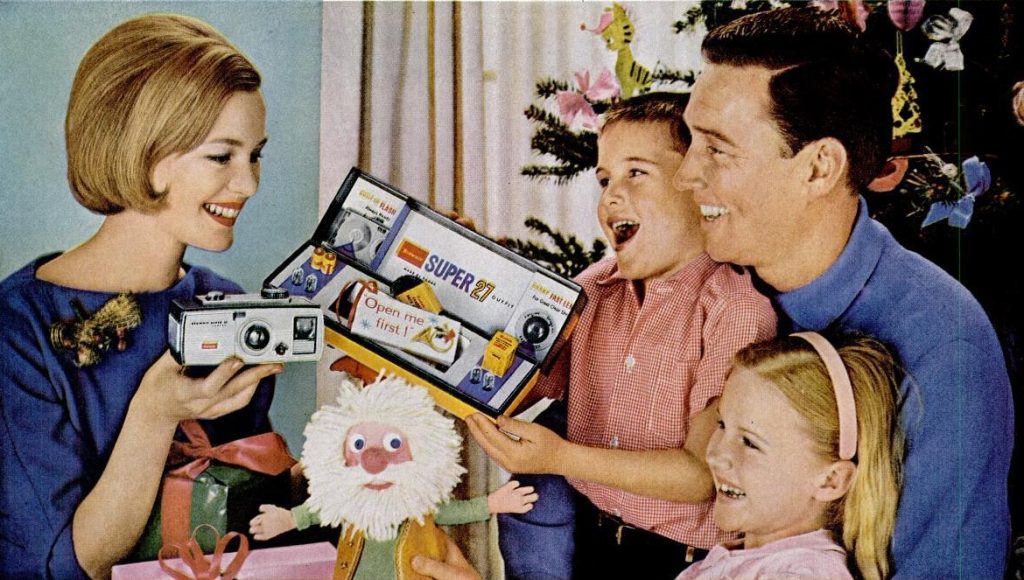
Although Kodak was happy to sell more cameras and sell 127 format film, in 1963, the company would release a new format of 35mm film called Kodak Instamatic. This new film type used 35mm wide film stock, entirely contained in a plastic cassette that was easier to load. Instamatic cameras exposed square images that were 26mm x 26mm in size. Slide mounts for Instamatic film were created for those who preferred square format slides, but with more economy than 12 exposures per roll like with 127.
The Super Slide craze would die down by the mid 1960s, as would the sale of most 127 cameras. According to the list of Kodak cameras at kodaklist.com, only a handful of 127 models were produced after 1965 with the very last model discontinued in 1970. Kodak would continue to produce and sell 127 film until 1995, but clearly was no longer a priority to them.
Today, the market for inexpensive 127 cameras is pretty small. The Kodak Brownie Super 27 has appeal to those who specifically seek out Kodak cameras, or cameras with strange shapes, so you may see one or two on a collector’s shelf, but it’s not likely that many are used today which is a shame as these are quite capable little cameras that are surprisingly fun to use. Examples for sale on eBay usually have very low asking prices, and the simple design of the camera results in many that should still be in good working order, so if you’re in a “collector’s rut” and are looking for something different, pick one up. You could certainly do a lot worse!
My Thoughts
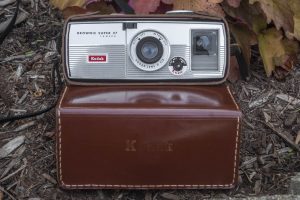
The name Kodak Brownie has taken on nearly every shape, size, color, and form factor, from plain carboard boxes to oddball shaped cameras like this one. The Kodak Brownie Super 27 is from a short lived series of cameras that strongly resemble what the offspring of a slide projector and digital alarm clock might look like.
The reason I have this camera was the result of late night boredom scrolling online when one popped up for sale for a couple bucks and I thought it was interesting enough to take a chance at it. After mentioning to my friend Adam Paul that I had scored one, he told me he had one too and actually quite liked it. My spontaneous impulse buy suddenly got more interesting.
When the camera arrived, it was in as good of condition as I expected, but boy, was it stinky! Such is the life of a camera collector, some cameras have more funk than others. Giving this camera a good wipe down and putting this in a well ventilated area for a couple of weeks made a huge improvement. I noticed that the film pressure plate had fallen off as the foam used to attach it had rotted away, so I scraped the old stuff off and put some new double stick foam tape to secure it again.
The camera itself is attractive, but very light weight. The front trim is metal but the main part of the body, film compartment, and even the windows are plastic. Areas that look chrome are actually white plastic with silver paint on it. In your hands, the Brownie Super 27 doesn’t inspire much confidence, but I suppose that for the target customer, this wasn’t much of an issue.
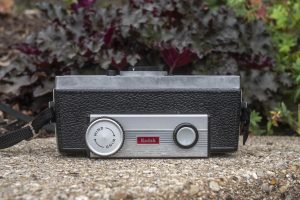
The top of the camera has exactly two things, a large plastic film advance knob and a pretty good size gray plastic shutter release button. The shutter release has a black plastic ridge around most of it’s perimeter, only dropping off on the side to give your finger a place to rest. This ridge mostly serves the purpose of helping to reduce the chance of the shutter accidentally being triggered while the camera is in storage. The film advance knob has clockwise arrows indicating the direction of the film transport, but can be turned in the opposite direction. Turning the knob the wrong way does not actually turn the film spool, thankfully. The camera does have a rudimentary double exposure prevention, which means the shutter cannot be fired again until after winding the camera to the next exposure. This works with or without film in the camera.
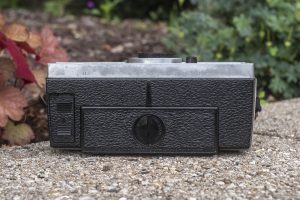
The bottom of the camera has a rotating lock for opening the film compartment, and the sliding compartment for the flash’s AA battery compartment. The batteries do not power the camera at all, so if you’re not using the flash, you don’t need to insert batteries. There is no tripod socket, nor is there a need for one, as the camera lacks a Bulb mode, any speeds slower than 1/40 of second, or a self-timer for selfies.
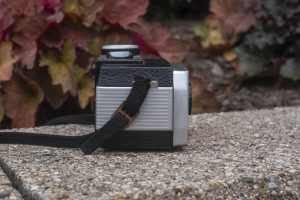
Each of the camera’s sides are symmetrical, containing only a metal strap loop. This example has a black nylon strap through the loop and looks like it has never been removed. I would suspect that a majority of these cameras are the same way, in which the original strap is never removed.
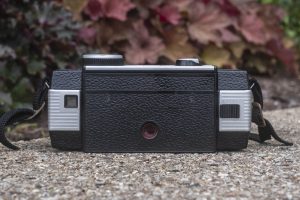
Around back there is the rectangular opening for the viewfinder eyepiece and opposite it, an eject slider for releasing the flash bulb from it’s socket. Typically, after using a flash bulb, it can get quite hot, so users of this camera would have likely waited a little while after firing the flash before ejecting a spent bulb. In the center of the door is a round window for reading exposure numbers on the 127 film backing paper. The Kodak Brownie Super 27 lacks any kind of automatic film transport, so advancing the film is highly dependent on reading the numbers through this window. If you go past an exposure number, there is no way to rewind the film while still in the camera. This window lacks any sort of door to protect it from light, which was less of a problem in the era which this camera was used as film speeds were generally pretty slow, however if you were to try to shoot this camera with faster 100-400 speed films, there is a very good chance that bright light could still make it past the red window, exposing your film, so it is important to keep this window shielded from bright light with film in the camera.
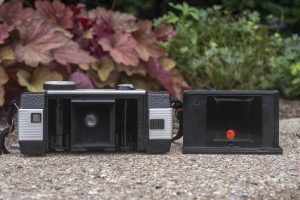
With the back of the camera removed, we see an ordinary 127 roll film compartment. Film transports from right to left onto normal 127 spools. Typically, after finishing a roll of film, the empty supply spool remains on the right. Before loading in a new roll of film, you’d move the empty spool from the right to the left side and load in a new roll of film onto the right side, stretching the paper leader across the film gate before closing the door. The inside of the door has a painted metal pressure plate, which as mentioned earlier in this article, is very prone to falling off and must be reattached using fresh adhesive before using the camera. The edges of the film compartment have rather deep channels, so no light sealing material is needed.

Up front, starting with the left third of the camera, we have the flash. Hidden behind a metal door which is opened by a sliding switch above and to the left of the lens, the built in flash compartment uses compact AG-1 bulbs which for the films typically available when this camera was new, have an effective range of up to 18 feet. With higher speed films, the flash distance can be farther, but as a general rule, flash photography is most ideal for subjects 6 to 15 feet away. Opening the flash door also doubles as putting the shutter into a slower 1/40 speed from it’s normal 1/80 setting. Although not documented on the camera, if you want to shoot without a flash in low light, but just need an extra stop of exposure open the door.
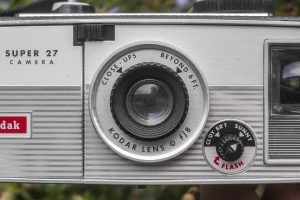
Around the lens itself is a two position dial which changes the focus range from Close-Ups (3 – 6 feet) and Beyond 6 feet. With a maximum aperture of f/8, the semi-wide angle Kodar lens offers great depth of field, so that these two ranges are all you need. A smaller dial, below and to the right of the lens controls the aperture of the lens. A metal plate with a smaller hole swings in front of the lens at the Sunny/Flash setting, effectively reducing the aperture to about f/13.5. Combined with the two speed shutter, this effectively gives you up to three stops of exposure control on the camera. Finally, off to the right is the rather large opening for the optical viewfinder.
The viewfinder itself is very plain, just a simple straight through optical square, approximating the field of coverage for the Kodar lens. There are no projected frame lines, or any other types of information visible about exposure or any camera setting.
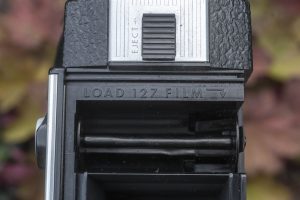
As was the case with pretty much any Brownie camera, the Brownie Super 27 was designed to be easy to use. For a short while in the late 1950s and early 1960s, there was a fad for 127 “Super Slides” which were larger than regular 35mm slides, offering greater detail in a larger image. This almost certainly is where the “Super” in the camera’s name comes from as it’s a pretty simple device, without much else to make it “super”. Of course, we’ve seen many simple cameras make super images, so perhaps that’s where the name comes from. But does it?
Repairs
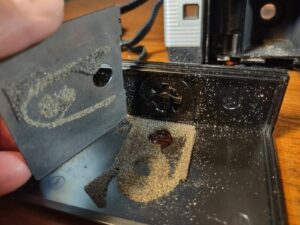
Although the camera came to me in good working condition, one fault it had, which I believe will be there on any version of this camera out there, is that the film pressure plate inside the film door, had fallen off. Unlike many cameras where the pressure plate is secured with metal clips, on the Brownie Super 27, a piece of sticky foam held it into position, which over time has crumbled away, losing it’s adhesion.
I did not take any photographs of the repair, but all I did was scrape off the old foam, using acetone to clean it off and then securing it with a small piece of double sided foam tape. If you do not reattach the pressure plate with something that keeps it taught against the film gate, any images you shoot in the camera will be badly out of the focus as the film will not be held correctly in the film plane.
My Results
When it comes to shooting a 127 film camera from the 1960s, what better film to use than 127 film from the 1960s. If you’re a long time reader of this site, then you know that means is it’s Supre-Tone! I picked up a lot of this time-travelling film on eBay a couple of years back and have been using it sparingly. Other than coming in an orange paper wrapper with the words “Made in Germany”, I know nothing else about this film. Very little information exists about it online, other than it was an ASA50 speed film from the 1960s. Whatever the story is behind this film, I’ve gotten great results in everything from a Vest Pocket Exakta, to a Purma Special, to a Foto-Flex. So when it came time to choose something to load into the Brownie Super 27, it was an easy decision!
As expected the film produced great images with good contrast and very little signs of aging. A few spots here and there are all that suggest this film is more than half a century beyond it’s expiration date.
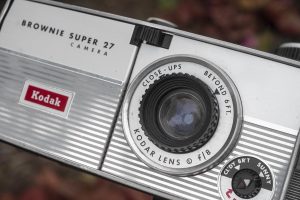
What was surprisingly though is how well the Brownie Super 27 performed. Eastman Kodak has always had a knack for getting good results from modest cameras. I’ve seen it time and time again, inexpensive cameras with single speed shutters, and meniscus or doublet lenses that turn out pretty nice images.
The glass Kodar lens is better than this mostly plastic camera would suggest. Sharpness in the center is excellent with noticeable, but entirely acceptable, softness near the edges. A small amount of vignetting is visible in images where the sky is evident, but nothing that anyone in this camera’s target price range would have had an issue with.
The one issue I did notice on both my images and others I’ve seen online from others using this camera is that the lens is very prone to flare. In the image of the front of the Chrysler automobile and the crucifix headstone, I am shooting into the sun, and there’s quite a bit of flare, so it’s clear the lens doesn’t like bright lights. Normally, I would suggest this is a result of internal haze, but my lens looks pretty clean and I’ve seen it in other images shot with this camera, so I suspect it’s just a characteristic of the camera’s basic design and primitive Lumenized coating.
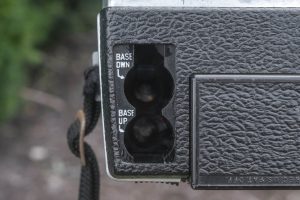
My ambitious attempt at a mirror selfie barely returned an image. You can see in that image, I left the flash door open in an attempt to use the slower shutter speed, but with the default f/8 aperture and very expired 50 speed film, there simply wasn’t enough light to make a good image. Had I tried a flash, I would have almost certainly blown out the image being so close to the mirror, but hey, at least you can see something!
The ergonomics of the camera’s odd shape is strangely satisfying. The camera fits comfortably in my hands with the shutter release falling exactly where my right index finger expects it to be. The location of the rear eyepiece works well for me and since there really aren’t any other controls on the camera to deal with, you can keep your hands in the same location for every shot.
Overall, I quite liked the Kodak Brownie Super 27. With two shutter speeds, two exposure settings, and two focus distances, the cameras gives more control than many focus free box cameras with no settings for exposure. I never used the flash, but for people who needed it, having it all built into the camera would have been a pretty nice feature as well.
The Brownie Super 27 aren’t super common, but when they do show up, are almost always super cheap, and because they’re super simple in design, they almost always work, so buying one should be a super easy decision (see what I did there?) You may never end up mounting any color transparencies into super slides, but to walk in the footsteps of someone who did it sixty years ago is super rewarding in itself!
External Links
http://camera-wiki.org/wiki/Kodak_Brownie_Super_27
https://www.brownie-camera.com/45.shtml
http://www.jollinger.com/photo/cam-coll/cameras/Kodak_Brownie_Super27.html

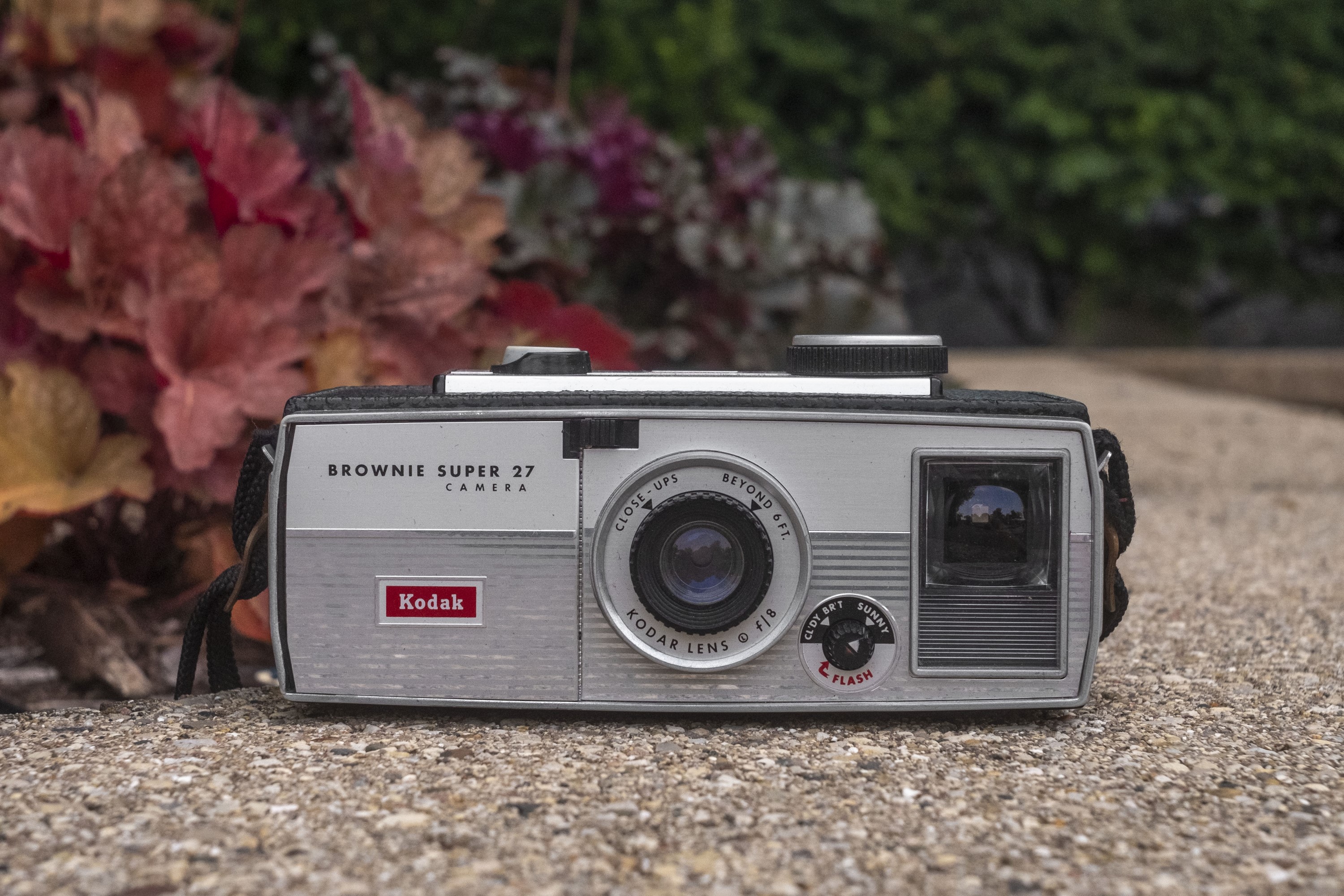
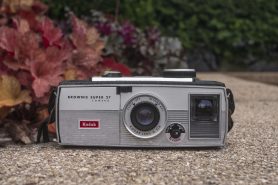
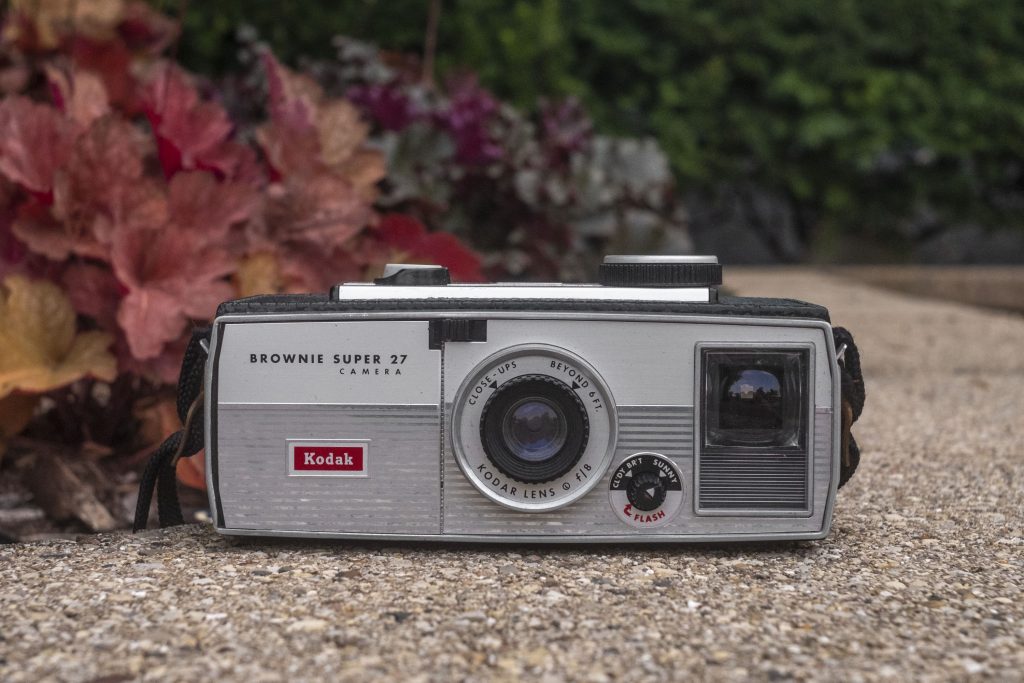











I live in the UK and this camera was not sold here, but I managed to find one, so your review is very interesting to me.127 film is difficult to find here. The last films of this size that I bought were Rera Pan 400 ISO, and was quite expensive. After reading your review of this camera It may be worth buying another couple of films just to see how the camera performs.
Although this camera wasn’t sold in the UK, I know there were a few other 127 designs that were, which to be honest, probably have the same lens. While I’ll never discourage someone from spending their own money, if you can’t find this one, there might be other similar options for you!
Mike — excellent photos, especially considering the age of the film, wow! Now I have yet another camera on my wish list!!!!
Well, I just could not resist: https://youtu.be/GtjPgTNRl30
Notice that setting the mode to flash lowered the shutter speed. Is this the first camera to do that trick? And was this what ultimately led to watching night football bowl games on TV with hundreds of flashes going off in the stands as a trick to get better exposed pictures?
I didn’t know why 127 made a comeback until this article! Interesting and well written as usual.
I have recently found your podcast and your camera reviews. I am enjoying them both. I have over 70 cameras that are 1930s-1980s and I recently bought a Kodak Super 27. It had the same metal pressure plate issue. A piece of 1.9 mm thick foam hopefully does the trick. It was the thinnest I could find.
127 Day is right around the corner and I have 4, 127 cameras to choose from, but I think it will be this Super 127. My Baby Brownie is an excellent shooter, but it has had film through it. I really want a Yashica 44. But I will have to be patient. I do my own developing and plan to “coffee” this Super 27 roll. This was a geat review and it has helped me learn some more about my camera. Be safe!
I was 11 years old, my mother said I’ll buy you a camera. It was one of these or an InstaMatic, as we were limited to what was available in the mail order catalog. We bought a lower level model, I dropped it and the flash door didn’t work quite as well. It gave me a distaste for Kodak cameras that lasted for several decades. I shot one roll of slides with it, properly exposed but not sharp. When I was 14 she decided to buy me another camera, a Yashica rangefinder, and I was then hooked for life on making images.